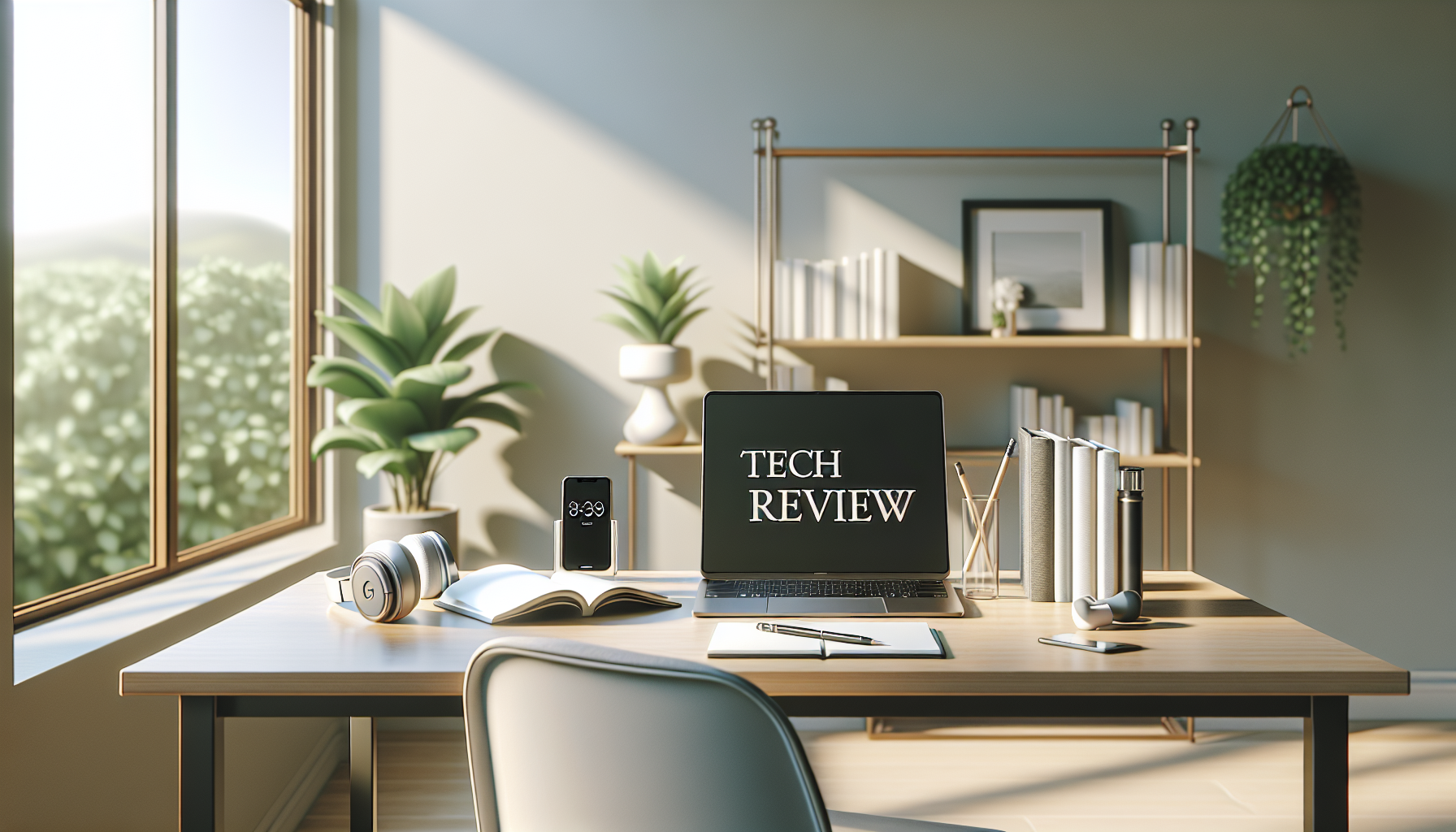Writing tech reviews can be a daunting task, especially if you’re juggling multiple products and trying to sound knowledgeable while keeping your audience engaged. It’s easy to feel overwhelmed by the sheer volume of gadgets and software out there, not to mention the pressure to be insightful and entertaining.
But don’t worry! If you keep reading, I’ll share some fantastic ChatGPT prompts that will make crafting your next tech review a breeze. You’ll discover how to leverage AI to generate content that’s not just informative but also fun and relatable.
From smartphone reviews to software critiques, we’ll dive into a treasure trove of prompts tailored to enhance your review game. Get ready to impress your audience and simplify your writing process!
Key Takeaways
- Writing tech reviews can be simplified using tailored ChatGPT prompts, making the process more engaging and less overwhelming.
- Effective prompts include generating detailed reviews, product comparisons, user experience summaries, and lists of features.
- For smartphone reviews, focus on camera performance, battery life, and gaming compatibility with specific prompts.
- Use prompts for laptops that cover specifications, performance, and common user issues for deeper insights.
- Customize prompts to reflect your unique writing style and desired tone for authenticity in your reviews.
- Advanced prompts can provide sophisticated analyses like SWOT assessments and retrospective reviews for added depth.

Top ChatGPT Prompts for Writing Tech Reviews
Writing tech reviews can be challenging, but with the right ChatGPT prompts, you can streamline the process significantly.
Here are some top prompts to get you started:
- “Generate a detailed review of the [specific product name or type], focusing on its key features, pros, and cons.”
- “Compare [product A] and [product B], highlighting their strengths and weaknesses in an easy-to-understand table.”
- “List the top three use cases for [specific gadget or software], and explain why each is beneficial.”
- “Write a user experience review of [product name], including performance, ease of use, and overall satisfaction.”
Using these prompts can help you kick off your writing, especially when you’re stuck or need some inspiration.
How to Use ChatGPT for Effective Tech Review Generation
To create effective tech reviews with ChatGPT, start by defining the structure you want your review to follow.
Here’s a step-by-step guide:
- Identify the product you are reviewing and gather basic specifications.
- Use prompts like “Provide an overview and key features of [product name].”
- Incorporate user feedback by prompting, “Summarize user reviews for [product], focusing on common praises and criticisms.”
- Ask for a comparison with a competitor by using “What are the main differences between [product A] and [product B]?”
- After you draft the review, have ChatGPT help with edits: “Suggest improvements to this tech review draft.”
This approach will help you create structured, insightful reviews, enhancing the overall quality of your tech content.
Best ChatGPT Prompts for Smartphone Reviews
Smartphones are a hot topic, and having the right prompts can make your reviews stand out.
Consider these prompts to effectively generate smartphone-related content:
- “Write a review of the [specific smartphone model], detailing its camera performance, battery life, and user interface.”
- “Create a side-by-side comparison of the top 5 smartphones under $500.”
- “Provide a list of features that make [smartphone name] a suitable choice for gamers.”
- “Summarize customer opinions about the battery life and charging speed of [phone model].”
Using these tailored prompts will help you dig deeper into aspects that matter most to your readers.
Essential Prompts for Laptop Reviews Using ChatGPT
When it comes to laptops, potential buyers look for in-depth information before making a decision.
Here are essential prompts you can use to create compelling laptop reviews:
- “Outline the features of [laptop model], including processor specifications, RAM, and storage options.”
- “Analyze the performance of [laptop name] with a focus on gaming and creative tasks.”
- “Provide a comparison of battery life and portability among [laptop model A] and [laptop model B].”
- “List the most common problems users face with [laptop model], along with possible solutions.”
These prompts will help you gather comprehensive information to inform your readers about the laptops they’re considering.

Creating Comprehensive Software Review Prompts for ChatGPT
When it comes to software reviews, detailed prompts can help ChatGPT provide insightful and comprehensive analyses.
Here are some prompts you can use:
- “Generate a review of [specific software name], highlighting its main features, advantages, and drawbacks.”
- “Summarize the user experience for [software name], focusing on interface design, user support, and overall satisfaction.”
- “List the top five alternatives to [software name] and compare their key functionalities.”
- “Analyze the pricing structure of [software name] and discuss whether it offers good value for money.”
These prompts will help you create reviews that not only inform your readers but also guide them in making informed decisions about software.
ChatGPT Prompts for Analyzing Tech Gadgets
Tech gadgets often require nuanced analysis, and using specific prompts can yield comprehensive evaluations.
Here are some effective prompts for gadget reviews:
- “Provide an in-depth review of the [gadget name], covering design, performance, and durability.”
- “Compare [gadget A] with [gadget B], focusing on features, usability, and user feedback.”
- “List the essential accessories for [gadget name] and explain how they enhance the user experience.”
- “Summarize common technical issues reported by users of [gadget name] and offer troubleshooting tips.”
These prompts can lead to more thorough evaluations and help your audience understand the pros and cons of each gadget.
Tips for Tailoring ChatGPT Prompts for Your Tech Review Style
Tailoring your prompts to match your unique writing style can make your reviews feel more authentic and engaging.
Here are some tips to customize your prompts:
- “Create a prompt that reflects my writing voice; for example, ‘Write a fun and casual review of [product name]’.”
- “If I prefer shorter content, ask: ‘Summarize the benefits and drawbacks of [product name] in five bullet points.’”
- “Use a prompt that asks for user stories: ‘Include a user case scenario of [product name] in your review.’”
- “Let ChatGPT know the tone you want: ‘Write a professional summary of [software name], suitable for an academic audience.’”
These tips will enable you to make the most of ChatGPT while reflecting your personal style in your reviews.
Examples of Advanced ChatGPT Prompts for Tech Reviews
If you’re looking to push the boundaries with ChatGPT, consider using advanced prompts for deeper insights.
Here are some examples you can copy and paste:
- “Generate a detailed SWOT analysis of [product name], including strengths, weaknesses, opportunities, and threats.”
- “Write a retrospective review of [software name], assessing how its development has changed over the years.”
- “Critique the user interface of [gadget name], suggesting three ways it could be improved.”
- “Create a detailed timeline of major updates for [software name] and their impact on user experience.”
These advanced prompts can provide a richer content creation experience and generate more sophisticated reviews.

Common Mistakes to Avoid When Using ChatGPT for Tech Reviews
When using ChatGPT for tech reviews, it’s easy to fall into several traps that can undermine your content quality.
One common mistake is generating content without proper fact-checking.
Always double-check any specifications or features provided by ChatGPT against reliable sources.
Another pitfall is relying solely on AI output without adding your insights.
Mix in personal experiences or expert opinions to make your reviews unique and engaging.
Also, avoid being vague in your prompts.
Get specific to get specific answers; for example, instead of saying, “Review this product,” say, “Generate a review discussing the battery life and camera quality of [smartphone model].”
Lastly, don’t overlook the importance of a cohesive structure.
Ensure your drafts have a clear flow, which might require you to edit or ask for restructuring after the initial generation.
By sidestepping these common mistakes, you can produce clearer, more effective reviews that resonate with your audience.
Future Trends in Using AI for Tech Review Content
The use of AI in generating tech review content is evolving rapidly, with exciting trends on the horizon.
One notable trend is the integration of user-generated content into AI models to enhance personalization.
For instance, we might see AI that learns from consumer feedback, producing more tailored reviews.
Another trend is the advancement of AI’s ability to generate multi-format content, providing video summaries or infographics alongside written reviews.
In addition, voice-enabled tech review summaries could become popular, making it easier for users to engage with content on-the-go.
Finally, as natural language processing continues to advance, AI could offer increasingly sophisticated analyses that go beyond simple comparisons, diving deep into brand histories and market trends.
Staying updated on these developments may give you an edge, enabling you to create content that resonates with tech enthusiasts and prospective buyers alike.
FAQs
Start with specific prompts related to the product features, use comparisons for context, and ask for pros and cons. Tailor the tone and language to match your audience for the best results.
Focus on specific features like camera quality, battery life, and user experience. Ask for comparisons with previous models, and include user feedback or expert opinions for a well-rounded review.
Avoid vague prompts and over-reliance on AI-generated content without personal insights. Ensure accuracy by fact-checking, and don’t skip the editing process to retain your unique voice.
Incorporate storytelling elements, use relatable language, and pose questions to the audience. Add humor where appropriate, and provide visual context to enhance engagement in your reviews.
